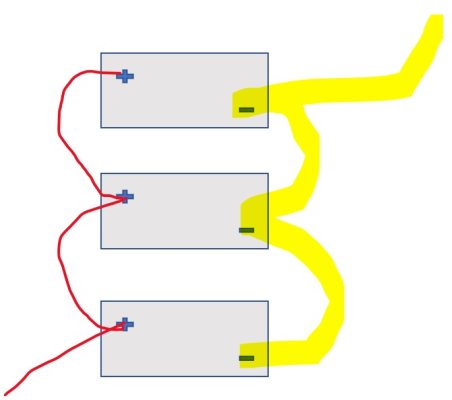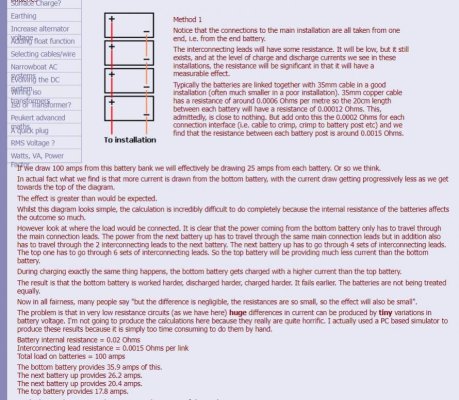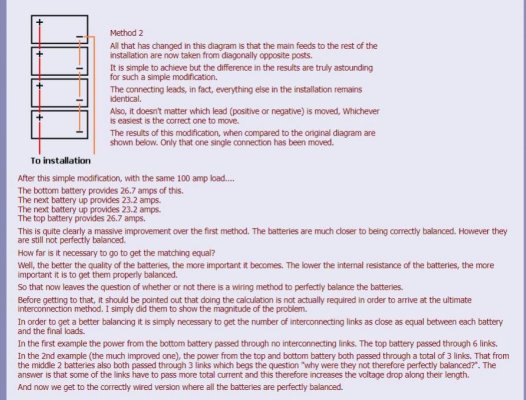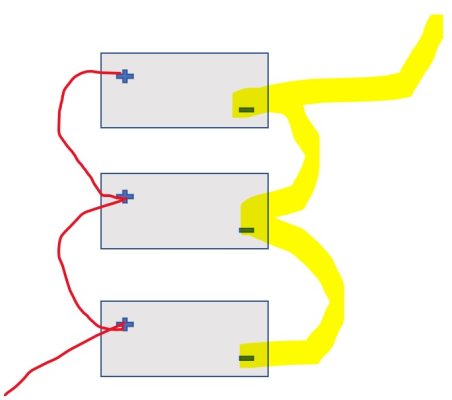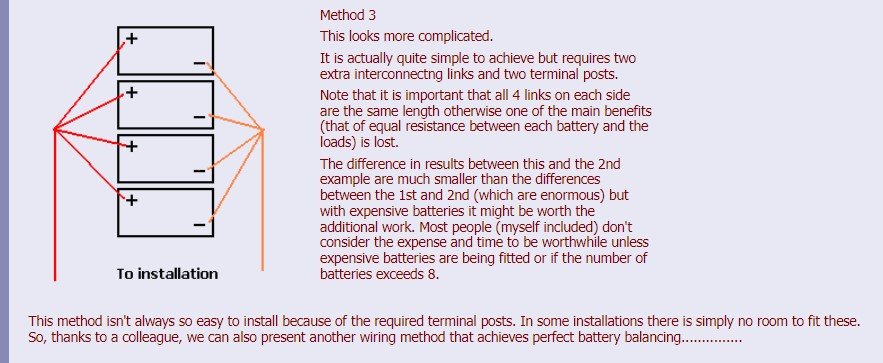Maybe I'm trying to simplify something that is more complicated than I'm seeing but here goes. When I look at diagrams on how to parallel 2 12V batts they all seem to show the source taking the power (starter, thruster, etc.) hooked with the positive to the positive of one of the two and the negative to the negative of the 2d battery and then you connect pos. of bat one to pos of bat. 2 and same with negative. Why? Seems much easier to just run the positive and negative off the starter or thruster to the first battery and then "jump" to the 2d with your connector wires like a mini-jumper cable about 1 foot long.
I have to be missing something since jumper cables obviously parallel batteries temporarily and a 1 foot long one permanently connected set seems easier than using a positive off one battery and negative off the other.
Don
I have to be missing something since jumper cables obviously parallel batteries temporarily and a 1 foot long one permanently connected set seems easier than using a positive off one battery and negative off the other.
Don


